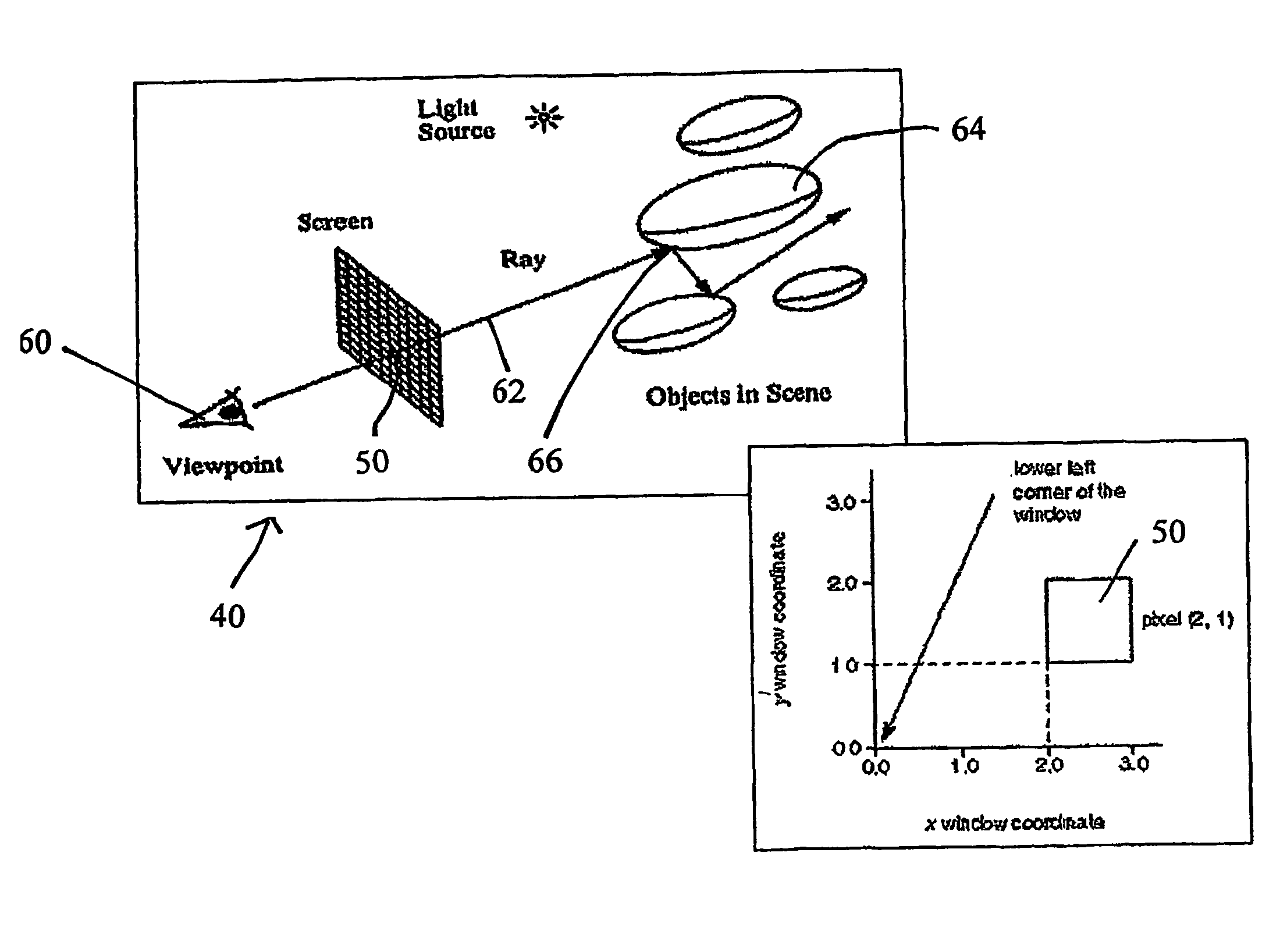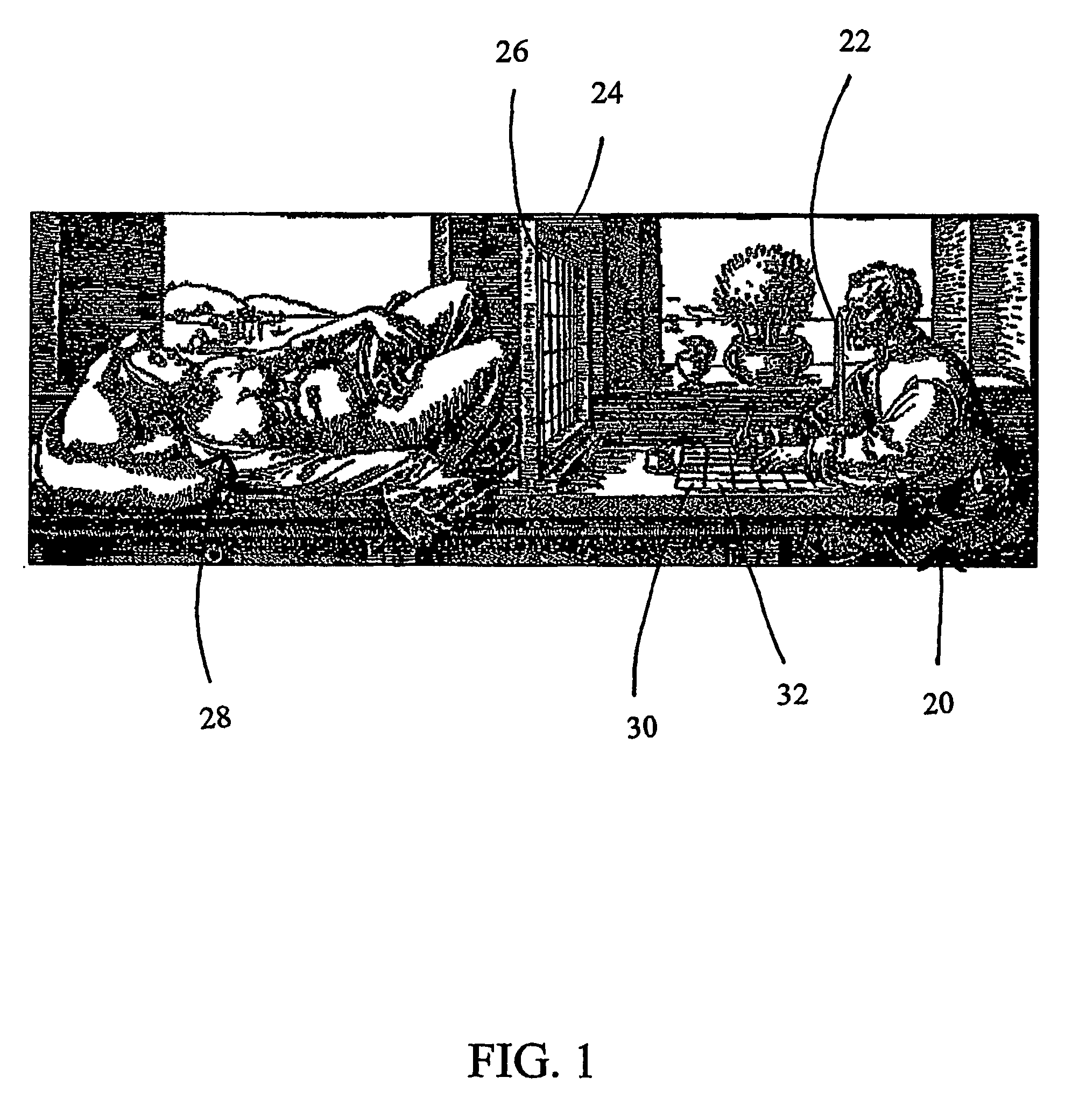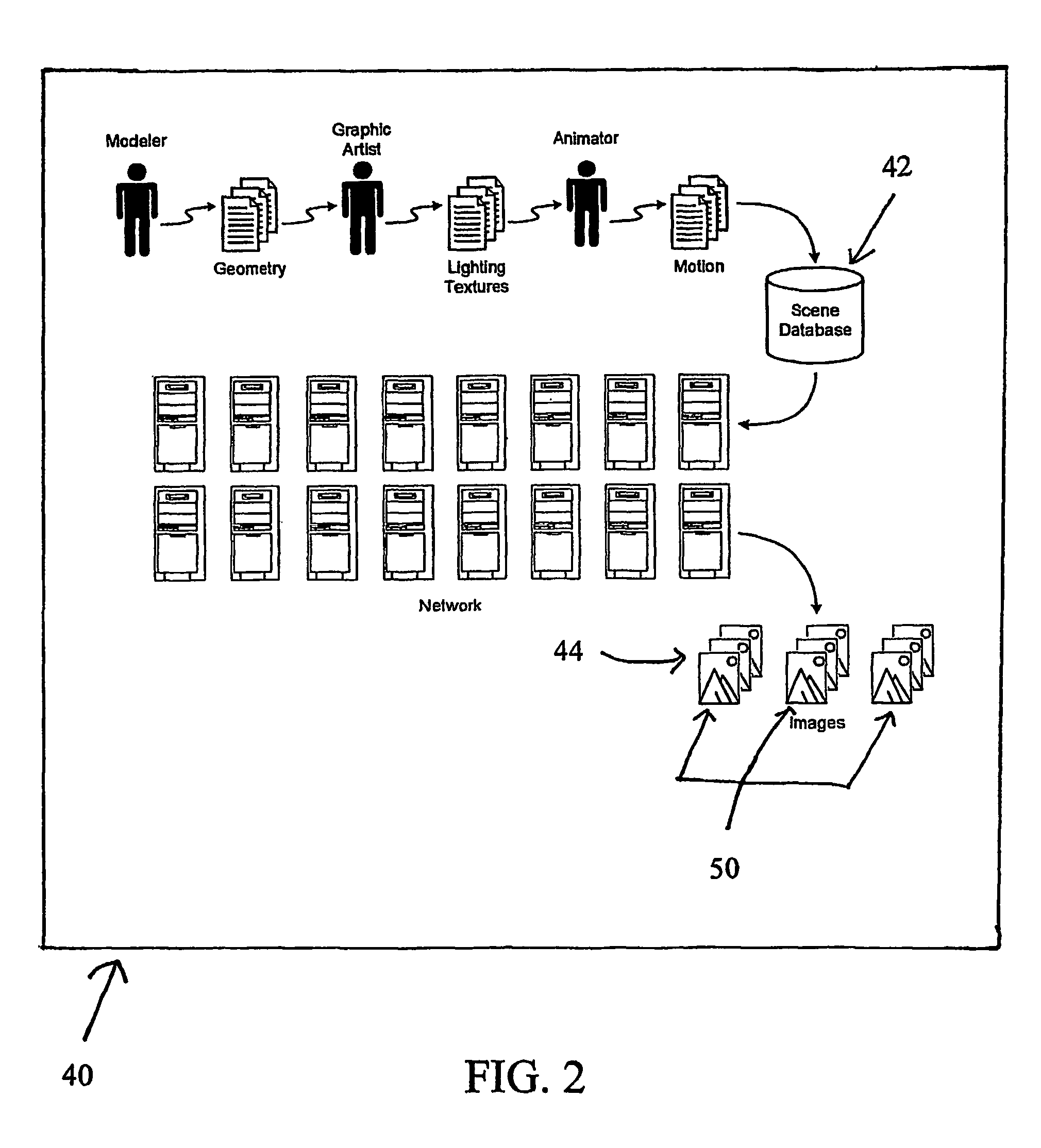System and method visible surface determination in computer graphics using interval analysis
a visible surface and interval analysis technology, applied in the field of computer imaging or graphics, can solve the problems of reconstructed images using conventional point-sampling, inability to compute accurately and deterministic, and numerical instability of the intersection between a point-sampling ray and the primitive,
- Summary
- Abstract
- Description
- Claims
- Application Information
AI Technical Summary
Benefits of technology
Problems solved by technology
Method used
Image
Examples
Embodiment Construction
[0037]The present invention abandons existing point sampling techniques, and instead provides a system and attendant methodology for reconstructing two-dimensional digital images of a three dimensional digital representation of a visual scene, a process referred to as rendering, so as to photorealistically synthesize images. In furtherance of detailed invention development, a rendering framework is preliminarily outlined.
[0038]FIG. 1 shows a classic example of how a renaissance artist uses the well-known grid technique to translate real world images into two-dimensional drawings. An artist 20 uses a stick 22 as the reference point for the artist's viewing position. The artist 20 looks through the cells 24 created by a rectangular grid of twine 26 into a scene 28 behind the grid. A drawing paper 30 on which the artist 20 will render a two-dimensional representation of the scene 28 is divided into the same number of rectangular cells 32 as there are cells 24. The artist carefully copi...
PUM
 Login to View More
Login to View More Abstract
Description
Claims
Application Information
 Login to View More
Login to View More - R&D
- Intellectual Property
- Life Sciences
- Materials
- Tech Scout
- Unparalleled Data Quality
- Higher Quality Content
- 60% Fewer Hallucinations
Browse by: Latest US Patents, China's latest patents, Technical Efficacy Thesaurus, Application Domain, Technology Topic, Popular Technical Reports.
© 2025 PatSnap. All rights reserved.Legal|Privacy policy|Modern Slavery Act Transparency Statement|Sitemap|About US| Contact US: help@patsnap.com



